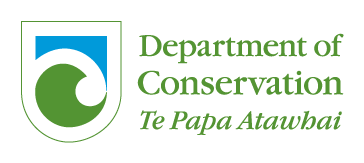Tourism Satelite Account
26 February 2025
StatsNZ
The Tourism Satellite Account, produced by StatsNZ, provides a picture of the role tourism plays in New Zealand, with information on the changing levels and impact of tourism activity. The latest report (year-ended March 2024) and table data can be found on StatsNZ's website.
Key provisional estimates for the year ended March 2024
| Year-ended March | Expenditure | Employment in tourism | Contribution to GDP | ||||||
|---|---|---|---|---|---|---|---|---|---|
| Domestic | International | Total | Direct | Indirect | Total | Direct | Indirect | Total | |
| 2019 | $23,702m | $17,164m | $40,866m | 220,653 | 150,198 | 370,851 | 5.6% | 3.9% | 9.5% |
| 2020 | $23,834m | $17,687m | $41,521m | 220,866 | 148,359 | 369,225 | 5.4% | 3.7% | 9.2% |
| 2021 | $25,027m | $1,485m | $26,512m | 145,188 | 95,058 | 240,246 | 3.3% | 2.2% | 5.6% |
| 2022 | $25,345m | $1,943m | $27,288m | 129,066 | 85,512 | 214,578 | 3.1% | 2.1% | 5.2% |
| 2023 | $28,191m | $10,601m | $38,791m | 160,998 | 109,584 | 270,582 | 4.1% | 2.8% | 6.9% |
| 2024 (provisional) | $27,494m | $16,946m | $44,440m | 182,727 | 120,693 | 303,420 | 4.4% | 3.1% | 7.5% |
| 2024 % change on 2019 | 16.0% | -1.3% | 8.7% | -17.2% | -19.6% | -18.2% | -21.4% | -20.5% | -21.1% |
| 2024 % change on 2023 | -2.5% | 59.9% | 14.6% | 13.5% | 10.1% | 12.1% | 7.3% | 10.7% | 8.7% |
For the year ended March 2024 (expressed in nominal terms):
- total tourism expenditure was $44.4 billion, up 14.6 percent ($5.6 billion) from 2023
- international tourism expenditure was up 59.9 percent ($6.3 billion) to $16.9 billion, returning to levels similar to 2019 ($17.2 billion)
- international student expenditure (studying less than 12 months) was $3.8 billion, up 76.2 percent ($1.6 billion)
- GST from international tourists totalled $1.7 billion, up $689 million
- international tourism’s contribution to total exports of goods and services was 17.2 percent, up 6.0 percentage points
- overseas visitor arrivals to New Zealand increased 44.8 percent to 3,183,376
- domestic tourism expenditure decreased 2.5 percent ($697 million) to $27.5 billion:
- household tourism expenditure decreased 5.8 percent ($1.3 billion)
- business and government expenditure increased 8.4 percent ($559 million)
- tourism’s direct contribution to GDP was $17.0 billion (4.4 percent of GDP), up 16.0 percent ($2.3 billion)
- indirect value added of industries supporting tourism was $11.7 billion (3.1 percent of GDP)
- the number of people directly employed in tourism was 182,727, up 13.5 percent (21,729 people):
- the number of tourism employees was 159,030, up 13.3 percent (18,624 people)
- the number of tourism working proprietors was 23,697, up 15.1 percent (3,102 people)
- direct tourism employment as a share of the total number of people employed in New Zealand was 6.4 percent.
Interpretation of data
The data sources used to derive figures for the March 2023 and 2024 years, at the industry, commodity, and resultant aggregate level, will be subject to future updates. These updates reflect post-COVID-19 methodological challenges and further assessment, and interpretation of the expenditure composition changes as part of the 2024 cycle of annual analysis and updated input datasets. Data presented in this TSA for these years should be considered initial guidance and may be subject to larger-than-usual updates.
Impact of emergency housing on accommodation expenditure
Accommodation expenditure in the March 2024 year continued to be affected by the use of traditional accommodation providers for emergency housing. In line with the definition of a tourist, emergency housing is not considered a tourism activity. While this expenditure is captured on the supply side, an allowance has been made to exclude it from the tourism demand side. As a result, accommodation product and industry ratios are historically lower, which flow through to tourism employment derivations. These derived numbers better reflect ‘employees’ engaged in tourism than those in accommodation industry entities servicing emergency housing.
Changes in tourism employment derivation
The derivation of tourism employment relies on the proportion of tourism expenditure relative to an industry’s output, multiplied by that industry’s employment counts. The substantial loss of international tourism expenditure, along with declines in some domestic tourism expenditure, COVID-19 impacts on industry output, and tourism's return to date has significantly changed these historically stable industry ratios. Employment counts across industries have also been affected. During COVID-19, some individuals classified as employed were supported by wage subsidy payments.

